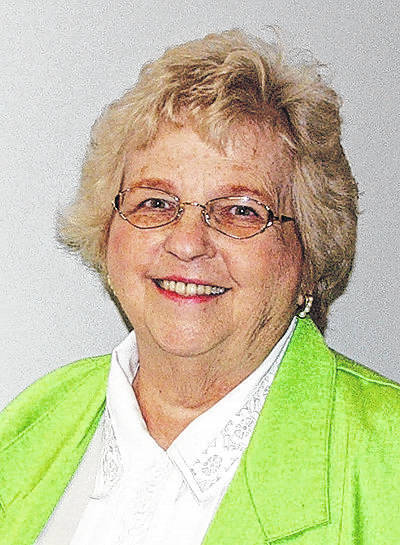
Long before there was an Air Force, Orville and Wilbur Wright learned to fly their new invention, the airplane in Greene County. The earliest experiment was at Kitty Hawk, N.C. a rather isolated area with high winds.
The brothers who lived in Dayton rode interurban over to a place in Greene County known as Huffman Prairie. It was here that they learned to take off and land their new invention. Mr. Huffman who owned the land agreed to let them experiment there, but with the caution that gates should be secured so the cattle did not get out.
Stories of their trials and errors are well-documented in the annals of history and with this invention man was finally able to fly above the ground without the use of hot air balloons.
Of course the Wright Brothers were not the first to attempt flight. Even in Greek mythology, Icarus attempted to fly to the sun, but the wax on his home-made wings melted from the heat and he fell to the ground.
Other inventors were working on similar inventions, hoping to be the first to accomplish what seemed an impossible feat, getting a plane into the air, but the Wrights are acclaimed as the first.
In 1904 and 1905, they refined their invention and in 1910 opened the Wright Company School of Aviation at Huffman Prairie.
An applicant who wished to learn to fly the planes had to pay a fee of $250 for a two week course of instruction. The instruction included “four hours of actual practice in the air and such instruction in the principles of flying machines as is necessary to prepare the pupil to become a competent and expert operator.”
There was considerable interest in the concept of controlled flight. The school had a total of 199 graduates in the few years that it was operational. The flying school closed in 1916.
Several of the students went on to reach fame. One of their students was Lt. Henry “Hap” Arnold.
No doubt the name of “Hap” Arnold is a familiar name to most readers. After he left the training school, his military career continued until he reached the rank of General.
General Arnold was born in Pennsylvania and planned to become a Baptist minister, however fate intervened and he was appointed to the U.S. Military Academy at West Point. It was then that as a cadet he received pilot’s training from Wilbur and Orville. Following his graduation from flying school, Lt. Arnold along with one other officer became the first flying instructors for the U.S. Army. He set a record for altitude and then broke his own record. He is credited as being the first pilot to carry mail, the first to fly over the U.S. Capital and the first to fly with a U.S. Congressman as a passenger.
“Hap” Arnold was again stationed in Greene County as Commander of the Wilbur Wright Field and the Fairfield Aviation General Supply Depot. When he assumed the command here in 1929, he had risen to the rank of Major.
After a serious crash, he quit flying for a few years, but later overcame his fear.
He became the youngest full Colonel in the U.S. Army and later became a five-star General in the U.S. Army as well as a five-star General for the U.S. Air Force, the only man to achieve both honors.
In 1917, after the U.S. had declared war with Germany, the War Department sought to secure more space for training. Three new installations were soon in place in this area. McCook Field, Wilbur Wright Field and the Fairfield Aviation General Supply Depot.
At McCook Field an Air Service Engineering School was opened to provide technical training for members of the armed forces. Later this became the Air Force Institute of Technology.
Patterson Field had been named in honor of Lt. Frank Stuart Patterson a son and nephew of the National Cash Register Patterson family. He was a test pilot who crashed at Wilbur Wright Field June 19, 1918. Each installation provided special support and training for Army personnel.
The U. S. Army Air Corps grew larger as did the local installations which supported that branch of the service. From 1941 to 1944, Wright Field experienced a great deal of growth including the addition of 260 new buildings.
Even though the two fields and the Fairfield Air Depot worked closely together on many projects they remained separate units until after World War II.
As the Army Air Force grew, so did the need for additional space. Barracks and training facilities were acquired as well as civilian housing.
In 1939 the Fairfield Air Depot boasted having 500 employees, but during the war the organization grew to 19,500 employees.
When WW II was ending, managers of Wright Field and Patterson Field began to administer the two fields as one. In 1945 a master plan included having just one installation known as the Army Air Forces Technical Base.
By 1948, all the property previously administered as separate units by the Army Air Corps had become part of the United States Air Force and the institution became known as Wright=Patterson Air Force Base.
On Veteran’s Day, remember all those who have served in any branch of the military since 1776. It is because of their service we have a free country.


